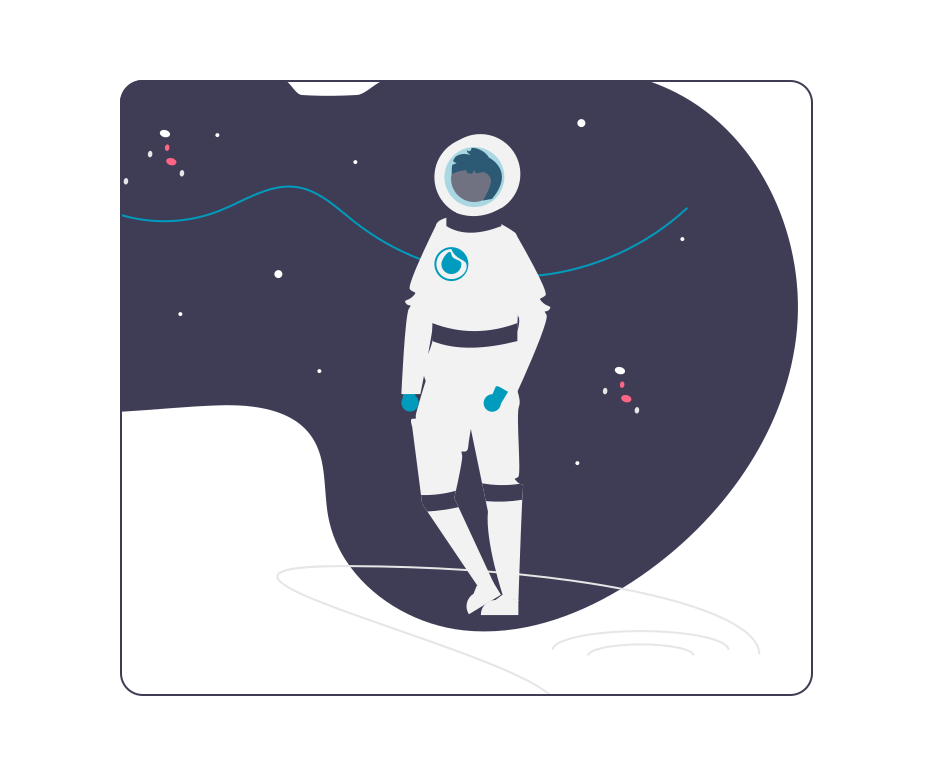Reading Practice: Living in Space

Here’s where you can download Reading Practice texts and professionally made worksheets designed to test and improve your reading skills – all available for only a few Academic Marks. Each authentic reading text has been carefully selected to best improve academic reading skills through repetition and success.
Before you begin reading...
-
video and audio texts
-
knowledge checks and quizzes
-
skills practices, tasks and assignments
Category: The Space Race
Topic: Living in Space
Difficulty: Intermediate-Advanced
Length: 1,382 words
Description: A mid-length article about the demands of extended periods aboard space stations on the human physiology and psychology.

The Space Race
Living in Space
1 The first manned spacecraft entered the Earth’s orbit in 1961, piloted by the Soviet’s Yuri Gagarin. At that time, Yuri’s flight was restricted to only one orbit of the Earth, totalling just 108 minutes. The concern then was that subjecting the human body to the conditions of space – namely weightlessness – could be fatal. Of course, this belief has been disproven hundreds of times since. In fact, the longest any person has spent in space is 438 consecutive days. This title is held by the Russian cosmonaut Valeri Polyakcov who resided aboard the first long-term habitable spacecraft, the Mir space station. Mir’s purpose was to allow for those who operated it to carry out experiments and collect data in the sciences (including human biology, engineering and astronomy) that would hopefully help develop the technologies that would one day make extended space travel a reality. However, extended space travel is not here yet. Indeed, due to the physical and psychological impacts of living on a space station, the longest period that is typically allowed is a mission of six months – with most visits being shorter. These restrictions have been informed by three decades of observations and experiences across two spaces stations: the aforementioned (though no longer in orbit) Mir and the still-manned International Space Station (ISS). This article will explore the lessons learned from living on these space stations, answering one question in particular… How does living in space affect the human form?
2 When considering how space travel impacts the human species, what we are really considering are two main foci: our bodies and our minds. Firstly, we should examine the impact of zero gravity, or what is technically called microgravity, on our bodies, balance, bones, blood and even our sight. While the earliest science fiction stories imagined spinning space stations that created their own gravity, this has yet to be the reality. As so many images and videos have shown us, when those who are aboard a space station let go of a cup or a hand railing, everything floats. This means that there is no longer a fixed up or down. In the first few days of living in space, this weightlessness can cause what has been coined ‘Space Adaption Syndrome’ – which perhaps, as one astronaut attests, is simply a more scientific way of saying vomiting. Nevertheless, when rooted to the Earth by gravity, our bodies are remarkably adept at making calculations that ensure we are well balanced. An organ in the inner ear called the vestibular system, along with pressure receptors on our skin and our muscles and joints, work collaboratively to keep us upright and able to focus. Remove gravity, however, and we remove the evolutionary skills of this team of physiological functions and become very disoriented. Thankfully, our bodies are quite able to adapt to this too over a few days, and once acclimated again, astronauts often find the experience of weightlessness quite exhilarating. Unfortunately though, after some weeks (or even months) in space, the return to Earth’s gravity has a similar negative effect. In fact, if an astronaut were to close their eyes shortly after landing, they would likely struggle to stand due to the significant effect this readjustment has on their balance.
3 In addition to balance, microgravity also has a measurable effect on the bones of space-dwelling humans. What many may not realise is that bone regeneration is a constant and complex physiological process. In simple terms, during this process the body discards old bone tissues, absorbs it, and produces new bone. This process is necessary due to the pressure our legs and backs are under to support the weight of our body on a gravity-bound planet. Remove gravity and we remove the need for one of our most constant physiological functions. The outcome? Longer term stays in space (those over a month) result in reduced bone density, amounting to a reduction of approximately 1% per month. While this may not sound hugely significant, it has not yet been proven whether this loss is temporary or permanent. Additionally, what has also been shown is that due to a lack of bone regeneration, calcium begins to appear in other parts of the body, potentially causing issues of calcification such as kidney stones. Furthermore, another bone-related phenomenon that occurs is that humans grow to be around 5cm to 8cm taller after extended periods in space. This is because our spine slightly spreads as we are no longer being pulled down by gravity. Though this stretching effect does reverse itself once back on Earth, this process can reportedly cause considerable back pain.


4 It is not only our bones and balance that are measurably impacted by microgravity but also our blood. In fact, all liquid in our body is changed by space travel. On average, two-thirds of the human body consists of water, whether in the form of intercellular fluid, blood plasma or the interstitial fluid between blood vessels. Initially, astronauts notice their faces inflate as fluids rise in their bodies, leading to a very common condition in which the sinuses become blocked. The added pressure and overfilling of blood vessels is also thought to be one of many contributing factors in the eyesight deterioration that is experienced by some astronauts. Furthermore, the loss of liquids from the legs can cause them to essentially deflate by up to one litre in volume. Similar to bone, our brain realises that in space we simply do not need to work so hard to produce and pump fluids around the body; as a result, blood plasma decreases by 20% and heart tissue shrinks. On returning to Earth, a lack of these essential fluids results in astronauts requiring periods of rest and careful monitoring until their body regenerates.
5 So far, this article has primarily dealt with the physiological impacts of living in space. This is because these are easier to notice and easier to measure than the psychological effects. Nevertheless, the mental wellbeing of those who spend extended periods of time aboard a space station is very much a concern. While Valeri Polyakcov may have been aboard the Mir for 438 days, this was not out of plan or intent. Space shuttles are noisy, smelly, cramped, bright and quite mechanical living quarters. Through observations, Russian psychologists are now able to predict with some accuracy the three stages of the mental experience of astronauts. Stage one usually occurs during the first third of the mission and is characterised by adjustment, distractions and new experiences. Stage two, perhaps around the two-month mark, is when the environment becomes more testing. Morale and motivation decline and fatigue begins to set in. Stage three is more challenging still, in which astronauts have a tendency to become irritated, hypersensitive and unduly nervous. This stage is known as ‘asthenia’. Indeed, one cosmonaut once joked that the most effective way to create the conditions for murder would be to lock two men in a six-metre-square cabin for six months. Even just two months in such a small space would be impossibly difficult for most people, explaining why cosmonauts have to be thoroughly screened and tested for psychological as well as physical endurance.
6 Ultimately, there is a lot to learn about how living in space affects the human form. There are serious health and mental implications that must be taken into account by anyone preparing to leave Earth’s orbit. Those who endure the experience are commendable. Not only are these individuals selected because of their superior intellect in the sciences and engineering, but because they are also physically capable of such strains. There have certainly been lessons learned on how to better avoid, reduce and treat some of the issues mentioned here, one key feature of any space dweller’s day is ensuring sufficient exercise.

Without it, the impacts of weightlessness would become even more severe. Spending eight hours strapped to a treadmill, for example, can help to keep the heart pumping, blood circulating, and leg and lower back muscles engaged. Until such technology is ready, however, to create a gravitational vacuum in a space station, perhaps through centripetal forces, such issues will continue to persist – and extended or permanent space habitation will remain a distant hope and a dream rather than a reality.
Word count: 1,382
Collect Academic Marks
-
100 Marks for joining
-
25 Marks for daily e-learning
-
100-200 for feedback/testimonials
-
100-500 for referring your colleages/friends